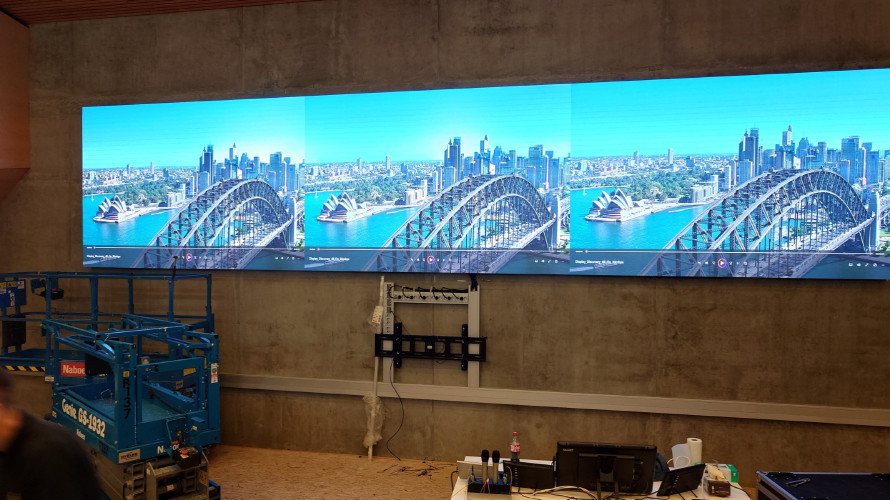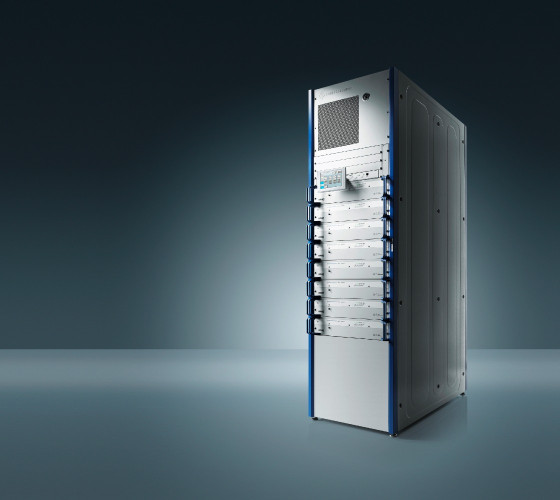Easy and accurate testing of low-power transmitters for digital TV

Author: Bob Pank#
Published 1st July 2011
Using portable TV analyzers for gap filler installation, maintenance, and service measurements
Twenty-five kilograms or more: That is how much the test equipment needed for testing digital television transmitters – a test receiver, spectrum analyzer, and power meter – weigh all together. This weight is not an issue for a transmitter like the one on the Olympic Tower in Munich. It is easily accessible with a van and the elevators in the tower. But what about the many gap-filler stations and transposers? They are usually not put in place until the second phase of the network installation and are intended to close local coverage gaps. They are often placed in locations that are difficult to access, such as on mountains or on house or factory roofs. Service technicians prefer to test such low-power transmitters with a small, portable test device.
As seen in the block diagram of a TV transmitter, a directional coupler with test ports for the forward and reflected power is placed at the transmitter output, followed by a mask filter and finally an antenna. TV network operators define what tests are required in their test specifications. However, the following parameters are always covered by the tests: transmit power, frequency accuracy, modulation error ratio (MER), bit error ratio (BER), and out-of-band emissions. If these parameters are within tolerance, the transmitter is functioning correctly.
Measurement tasks at the transmitter
The output power is the most important characteristic when operating a transmitter because it determines the transmitter's range. Digital TV signals are noise-like signals with a constant average power. A test receiver measures the power with high accuracy by integrating the power density over the occupied bandwidth. An even greater degree of accuracy can be achieved with an external power sensor. The technician has to correct the reading to account for the insertion loss of approx. 0.1 to 0.3 dB from the mask filter as well as the coupling loss from the directional coupler.
Digital TV transmitters can be operated in single-frequency networks (SFN). This demands a high degree of frequency accuracy of the individual transmitters, as they must not deviate from one another by more than 1 Hz. The test receiver must be synchronized with the transmitter to be able to measure deviations in this order reliably. Typically, a transmitter supplies a 10 MHz reference signal for this purpose. Alternatively, the test receiver can be synchronized with a GPS receiver. The GPS signal increases the accuracy of the test receiver's reference oscillator. This has the added advantage that any errors in the transmitter's reference source can be detected.
Measuring out-of-band emissions without bandstop filter
A particularly demanding task is to measure out-of-band emissions, i.e. signal components in the transmitter's adjacent channels. Out-of-band emissions are caused by nonlinearities in the transmitter. Although TV transmitters use highly linear amplifiers operating in class AB mode and a precorrection in the modulator, a certain amount of residual nonlinearity always remains, causing intermodulation products of the OFDM carriers. These appear as shoulders at the edges of the spectrum, and they extend into the adjacent channels. The mask filter flattens the shoulders to below the limit values specified by law. For example, DVB-T requires an attenuation of more than 80 dB relative to the useful signal at a spacing of ±10 MHz from the useful signal.
Modern TV receivers, like the R&S ETH handheld TV analyzer from Rohde & Schwarz, measure power, frequency, MER, and BER automatically in realtime and output results in an easy-to-read display. Fig. 2 shows a measurement for ISDB-T. It displays the MER and BER for layers A, B, and C separately. A power sensor can be connected to measure power with the highest degree of accuracy. A GPS receiver is available as an accessory. The TV analyzer can additionally be equipped with a tracking generator. This makes it easy to measure out-of-band emissions. The R&S ETH stores the measured filter characteristic of the mask filter as a transducer and uses it to automatically correct the spectrum measurement. The R&S ETH can also display permissible limit values and check whether they are complied with (Fig. 3). The included PC software exchanges measurement results, device setups, and transducer files between a PC and the instrument. The handheld TV analyzer combines all the functionality described in a highly compact, battery-operated box weighing no more than 3.3 kg. The instrument is not only light weight, it also lightens the service technician's workload.
Peter Lampel studied electrical engineering at the Saarbrcken University in Germany. He received his diploma in 1995.
From 1995 to 2006, he first worked as a development engineer for radar systems at EADS and then in the development and product management of mobile communications technology at Siemens AG.
Since 2006, he has been product manager of broadcasting and TV test equipment at Rohde & Schwarz in Munich, Germany.





























